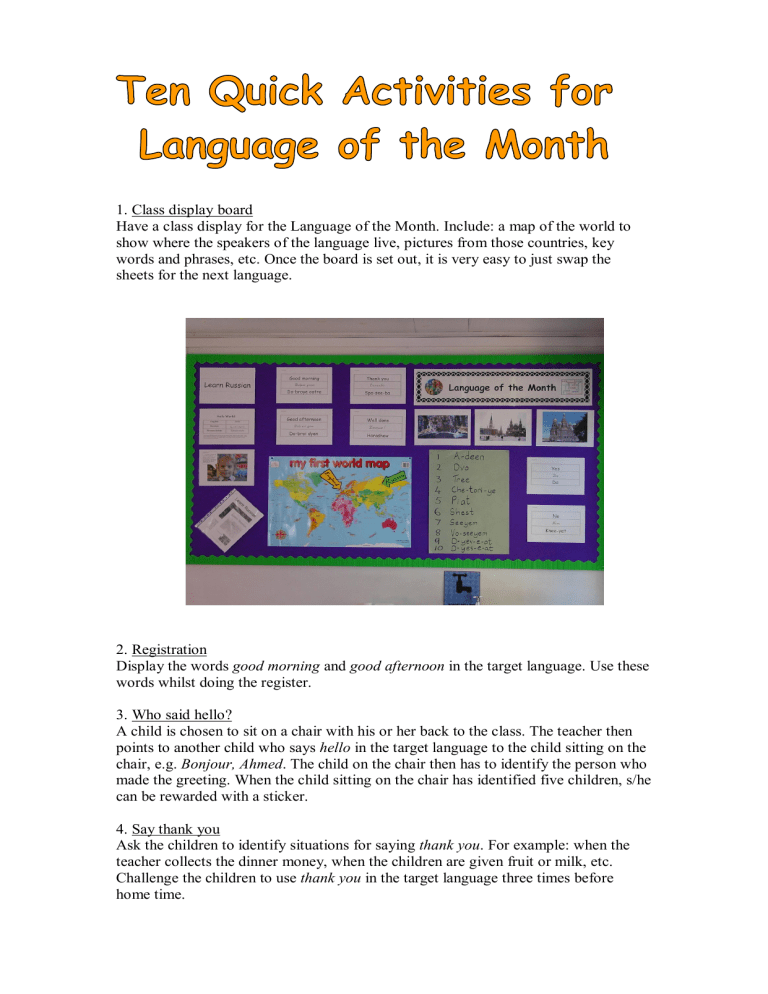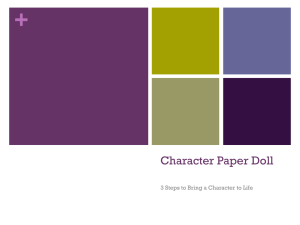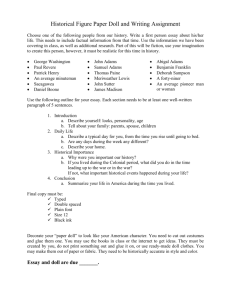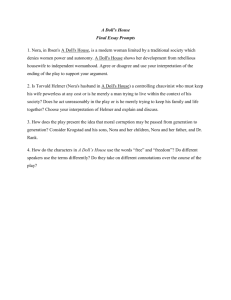1. Class display board Have a class display for the Language of the

1. Class display board
Have a class display for the Language of the Month. Include: a map of the world to show where the speakers of the language live, pictures from those countries, key words and phrases, etc. Once the board is set out, it is very easy to just swap the sheets for the next language.
2. Registration
Display the words good morning and good afternoon in the target language. Use these words whilst doing the register.
3. Who said hello?
A child is chosen to sit on a chair with his or her back to the class. The teacher then points to another child who says hello in the target language to the child sitting on the chair, e.g.
Bonjour, Ahmed . The child on the chair then has to identify the person who made the greeting. When the child sitting on the chair has identified five children, s/he can be rewarded with a sticker.
4. Say thank you
Ask the children to identify situations for saying thank you . For example: when the teacher collects the dinner money, when the children are given fruit or milk, etc.
Challenge the children to use thank you in the target language three times before home time.
5. Twenty questions
Display and rehearse the words yes , no and well done in the target language. Secretly write down the name of an object. The class has to ask questions to narrow down what has been secretly written. Questions can only be answered with a yes or no .
Keep a record of the number of questions asked. They can only ask up to twenty questions. When a child guesses correctly, say well done in the target language.
6. Famous person
Display and rehearse the words yes , no and well done in the focus language. Secretly write down the name of a famous person, e.g. Bart Simpson. The class has to ask questions to narrow down who the famous person is. Questions can only be answered with a yes or no . Give the class five minutes to get the answer. When a child guesses correctly, say well done in the target language. (With younger children use the names of people in the school.)
7. Find the doll
Display and rehearse the numbers 1 to 12 (1 to 6 for younger children). One child leaves the room, and another child hides a small doll in the classroom. The child waiting outside the classroom comes back in and has to find the doll. The class start chanting the numbers 1 to 12 in the target language. They get louder when the child gets nearer to the doll and quieter when the child moves away from the doll. The game ends when the doll is found.
8. Bingo
Write on the board 10 to 20 words from the focus language which you would like to review. Tell the children to choose any six words and write them down on a piece of paper. Now read out the words on the board, one by one, in any order. If the children have written down one of the words that you call out, they tick it on their piece of paper. When they have ticked all their six words, they call out Bingo . Keep a record of the words you read out in order to check the winner’s piece of paper.
9. The Harry Potter Game
Two children face each other with wands (rulers). The teacher then calls out a word in
English, e.g
. hello . The children cast a spell on their opponent by calling out the word in the target language, e.g.
bonjour . The first to do so correctly, wins the duel. The player who wins three duels wins the game. It is more fun if after each duel, the teacher suggests something that the loser has been turned into, e.g. a rabbit, a school tie, or a plate of spaghetti.
10. Before you go out
As the children go out for break or lunch, ask them to say a word from the Language of the Month.
_________________
The games listed here can be played once or twice a month, for just ten minutes at time. By using the games for short periods, spread over the month, the children will want to play them again when learning the next language. For more Language of the
Month ideas and resources, visit our website at: www.newburypark.redbridge.sch.uk





